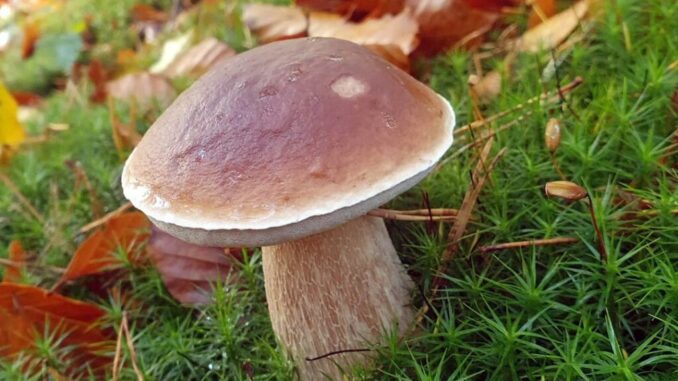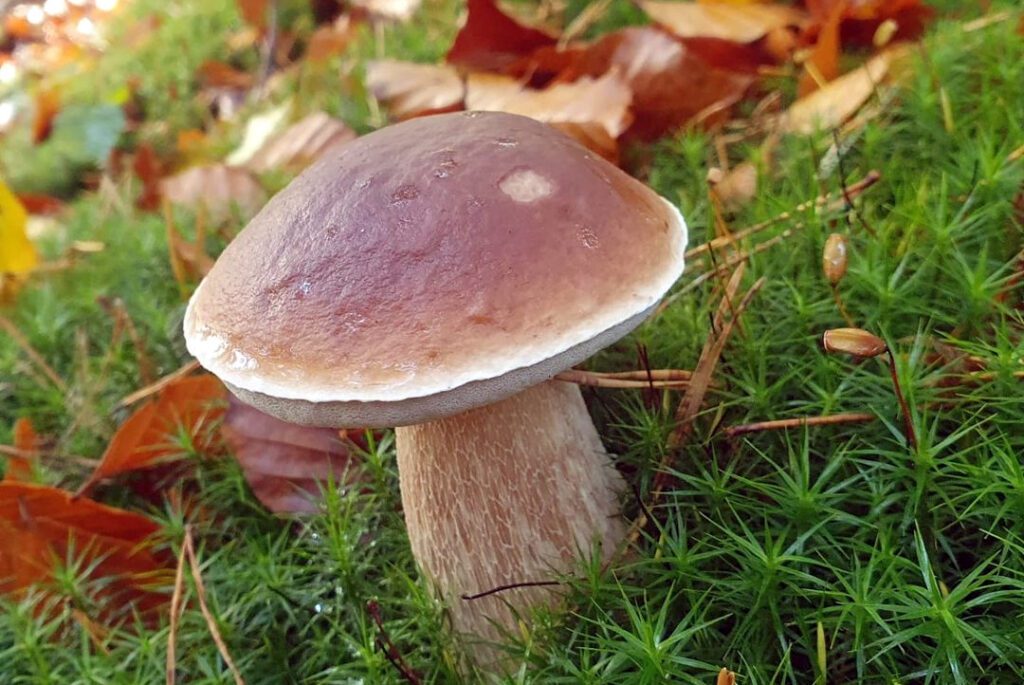
Learn King Boletes identification! Discover everything you need to identify King Boletes mushrooms!
Let’s go!

Are All King Bolete Mushrooms Edible?
Yes, all porcini mushrooms are edible! Indeed, there are multiple porcini, and all of them are edible: King Bolete (Boletus edulis var. grandedulis), Spring King Bolete (Boletus rex-veris), Queen Bolete (Boletus regineus)…
You can eat porcini mushrooms raw or cooked. You will appreciate their nutty taste and their deep aromas which stay in the mouth for a long time. It’s a real pleasure!
Porcini belong to the Bolete family. And some boletes are poisonous or inedible.
To be sure to distinguish porcini mushrooms from other boletes, find out more in this article.
Learn To Know The Different King Boletes
Before wanting to recognize King Boletes, you must already know that there are 3 main different porcini as we have just said: King Bolete, Spring King Bolete, Queen Bolete.
These 3 porcini mushrooms are similar in shape and in some characteristics, but there may be some differences and similarities that you need to know to distinguish porcini mushrooms from other boletes.
In addition, be aware that these Porcini are referenced on our Mushrooms Maps. Thanks to these maps, you know directly the best places of your state. Get a head start!
Learn To Identify King Bolete Mushrooms
Criteria For Recognizing Porcini Mushrooms
In order not to confuse the real King Bolete with a false one (another bolete), you can observe the following criteria which are mostly present on the 3 porcini. So with these criteria you will be able to recognize the King Bolete, the Spring King Bolete and the Queen Bolete:
- Fleshy cap: the cap is domed at first and then flattens with age. It is firm and fleshy and softens over time.
- Thick stem: Sometimes the foot can be slender, but often it is fleshy and thick.
- White flesh: It is white and becomes fibrous with age. It does not change color, but can sometimes turn very slightly pink under the cap cuticle. Porcini never turn blue when cut!
- Network: As a rule, a network (a kind of spider’s web) can be distinguished on all porcini mushrooms.
- Pore surface: like all boletes (Porcini belong to the Bolete family.) tubes are present under the cap. On the other hand, for porcini mushrooms, these are tight and white then gradually turn yellow then green with age.
- Sweet flavor: the taste of the porcini mushroom is sweet and has an Hazelnuts flavor.
Be careful, the criteria quoted above must be validated as a whole to designate porcini mushrooms and avoid confusion with other boletes. Indeed, some of these criteria taken separately can be easily found on other boletes.
Find King Boletes With Our Maps!
Would you like to know directly the best places to harvest porcini mushrooms? It is possible with our maps! We tell you which forest areas to go to find porcini mushrooms! Treat yourself and explore our Mushroom Maps here!
Do you want to know more about the Porcini foraging? Discover our article to find out where and when to find King Boletes.
Leave a Reply